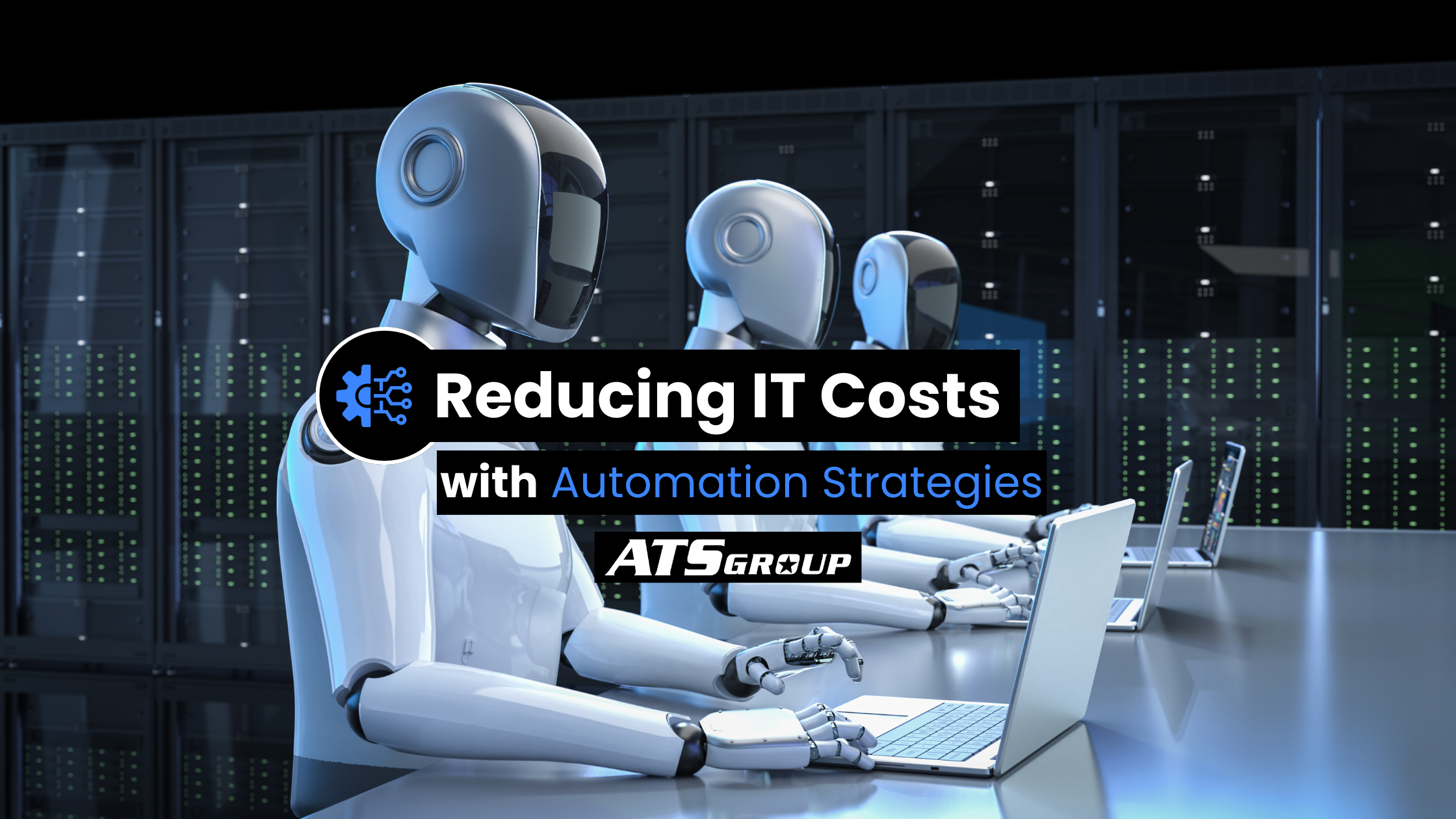Reducing IT costs with automation isn’t about slashing budgets—it’s about eliminating the operational inefficiencies hiding in plain sight. Manual processes, siloed tools, and reactive workflows quietly drain IT resources and drive up spending.
By automating key functions, organizations gain more than speed—they gain visibility, consistency, and control. Automation allows IT teams to work smarter, not harder, and make more strategic use of time, tools, and talent.
Why IT Costs Are Outpacing Budgets Without Automation
Even with flat or shrinking budgets, IT demands continue to grow. Controlling these rising costs means tackling the inefficiencies that legacy practices allow to persist. Reducing IT costs with automation starts with understanding the most common sources of waste:
1. Manual Processes and Human Error
Tasks such as patching, provisioning, and updating systems are time-consuming and error-prone. Automation replaces manual repetition with standardized, reliable workflows—reducing IT costs while improving accuracy and uptime.
2. Siloed Teams and Disparate Tools
Disconnected teams often adopt tools that solve individual problems but don’t integrate well with broader systems. Automation helps unify fragmented workflows and avoid redundant efforts, making it a key strategy for reducing operational overhead.
3. Inconsistent Environments and Configuration Drift
Without automation, maintaining consistency across environments becomes a manual and risky endeavor. Configuration drift adds to support burden and security risk. Automation standardizes infrastructure across the board, supporting cost-effective operations at scale.
4. Escalating Support and Incident Response Costs
Unplanned outages and reactive support responses cost time and money. Reducing IT costs with automation means resolving issues proactively—before they snowball into major incidents.
5. Inefficient Infrastructure Usage in IT Environments
Idle servers, oversized cloud instances, and overprovisioned environments are common—and expensive. Automating capacity adjustments and resource management reduces waste and aligns costs with actual usage.
How Automation Strategies Help in Reducing IT Costs
Automating repeatable tasks and orchestrating complex workflows delivers value far beyond time savings. Reducing IT costs through automation is achieved by increasing efficiency, consistency, and optimization.
Standardizing and Streamlining Workflows
Automated workflows replace ad hoc processes with predictable, repeatable sequences. These patterns eliminate inconsistencies, rework, and inefficiencies, directly reducing IT costs associated with manual effort.
Reducing Downtime and Speeding Incident Response with Automation
Automation makes early detection and automated remediation possible. Fewer outages mean lower support costs and reduced impact on the business. Reducing IT costs with automation often begins with reducing downtime.
Accelerating Software Delivery to Reduce IT Costs
Automation drives CI/CD pipelines that reduce manual steps in software builds, testing, and deployment. That means fewer rollbacks, faster delivery, and less overhead—especially in large-scale environments.
🔗 See how Red Hat defines DevOps automation best practices.
Improving Security Without Increasing Labor Costs
Security automation handles critical tasks like patching and compliance checks consistently. Instead of growing your headcount, you increase your reliability—cutting IT costs while improving your security posture.
Maximizing IT Team Productivity with Automation
Automating routine work allows skilled staff to refocus on innovation, architecture, and value-added activities. Teams become more productive—and your IT spending becomes more strategic.
Where to Start: High-Impact Automation Use Cases for Reducing IT Costs
The most successful automation strategies begin with specific, high-value use cases. These are common entry points for reducing IT costs with automation:
- Infrastructure Provisioning – Accelerate deployments while improving reliability.
- Patch and Configuration Management – Eliminate drift and improve system hygiene.
- User Access and Identity Management – Reduce manual overhead and risk associated with onboarding and offboarding delays.
- Cloud Cost Optimization – Use automation to match resources to demand and avoid overspending.
- DevOps Pipelines – Accelerate delivery cycles while reducing risk and errors.
- Hybrid Cloud Management – Bring consistency to on-prem and cloud operations, minimizing tool and labor sprawl.
Each use case demonstrates the role of automation in eliminating waste and streamlining operations.
Selecting the Right Automation Strategy to Reduce IT Costs
Reducing IT costs through automation requires deliberate planning and a thoughtful approach. Here’s how to get started:
- Begin with High-Frequency Tasks – Look for processes that are repetitive and prone to error.
- Quantify Results – Track time savings, failure reduction, and resource efficiency.
- Foster Cross-Team Collaboration – Automation delivers more value when teams align their goals.
- Avoid Tool Sprawl – Choose platforms that span multiple domains to avoid duplicative spending.
- Design for Flexibility – Use modular playbooks and workflows that can evolve.
Why Red Hat Ansible Is a Top Choice for Reducing IT Costs with Automation
Red Hat® Ansible® provides a flexible foundation for automating at scale. It’s widely adopted by IT teams looking to reduce costs while improving speed and quality.
Human-readable, Agentless Simplicity
Ansible’s YAML-based syntax is easy to understand and doesn’t require agents. That means faster rollout, lower setup overhead, and fewer compatibility headaches—ideal for cutting deployment and management costs.
Infrastructure as Code for Consistency and Savings
By treating infrastructure like software, Ansible helps prevent drift, reduces troubleshooting time, and speeds up recovery. These automation-driven improvements reduce IT support costs across the board.
Cross-Domain Automation to Consolidate Tools
Ansible’s ability to automate across applications, servers, networks, and security domains lets you consolidate your tool stack. Reducing IT costs with automation often starts by reducing the number of tools.
Built-in Security and Compliance Automation
From enforcing policies to documenting changes, Ansible helps you meet security requirements without manual audit prep—freeing staff and reducing exposure.
Backed by Red Hat and the Open Source Community
Ansible’s open ecosystem and Red Hat’s enterprise support give IT leaders confidence in long-term cost control and adaptability.
📺 Explore event-driven automation in our on-demand webcast.
The Bottom Line: Smarter Spending Starts with Automation
Reducing IT costs with automation isn’t a single initiative—it’s a mindset shift. Instead of doing more with less, automation helps you do the right things better: faster, cheaper, and with less risk.
By eliminating waste and standardizing complex processes, automation strategies help you spend smarter and align your IT budget with business growth.




